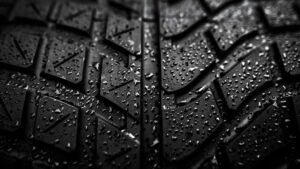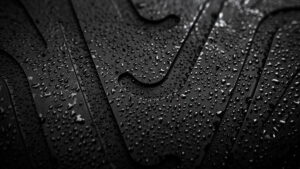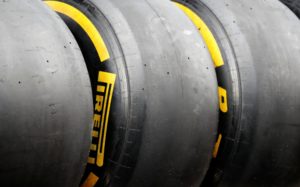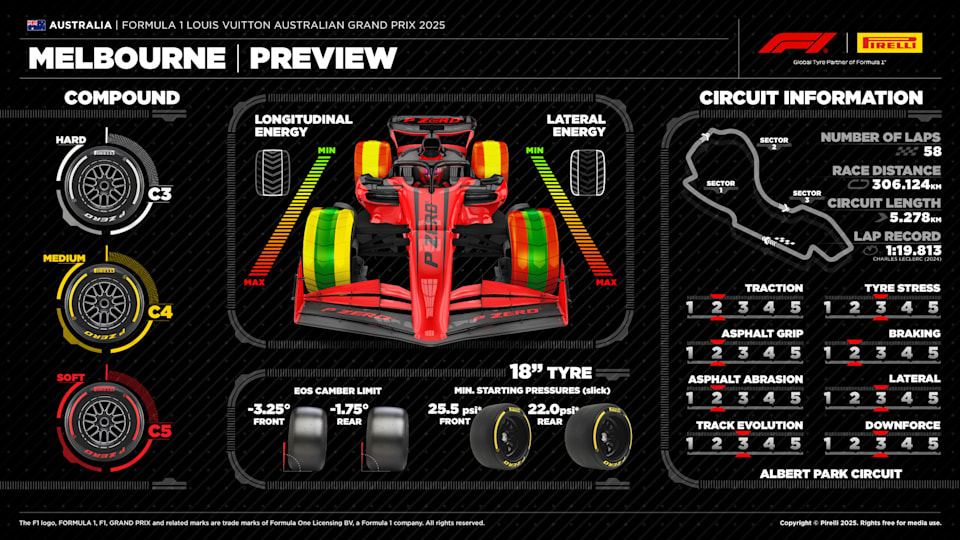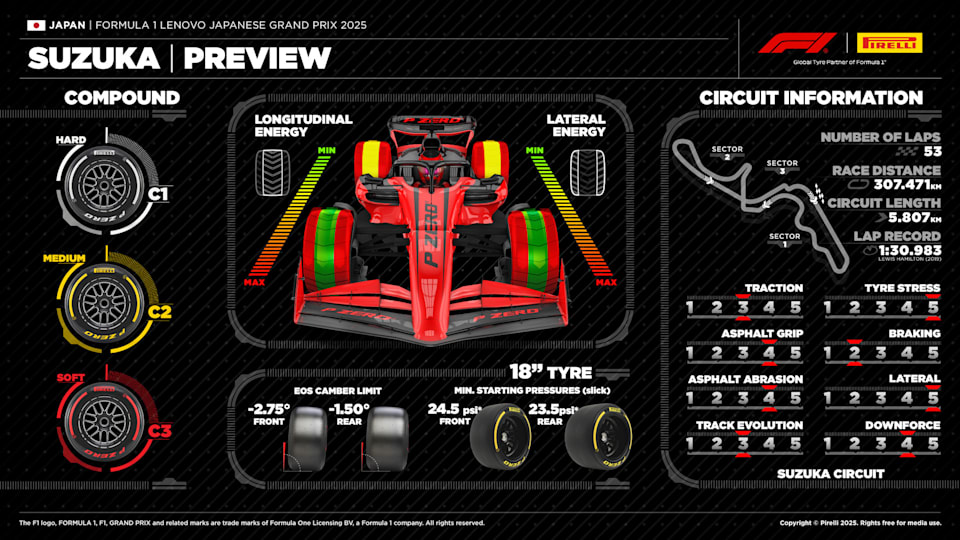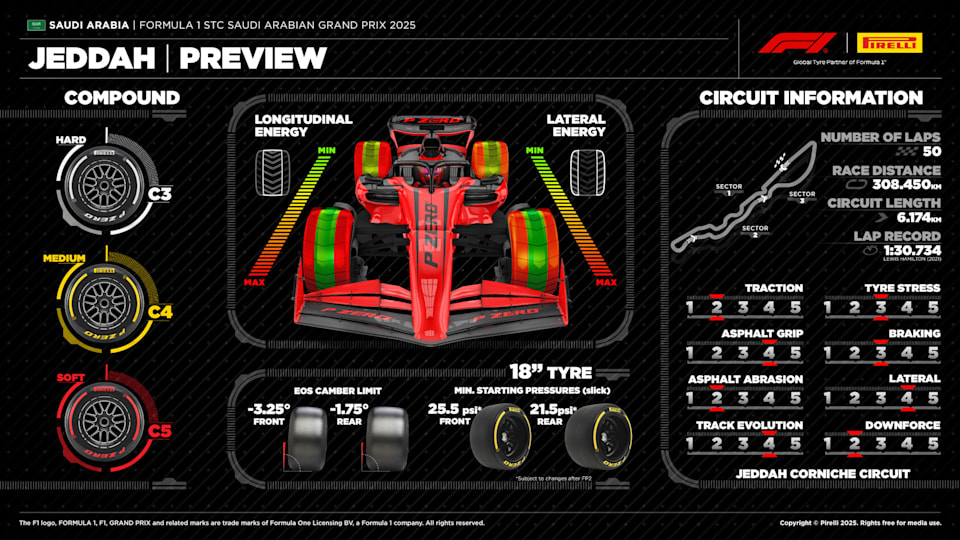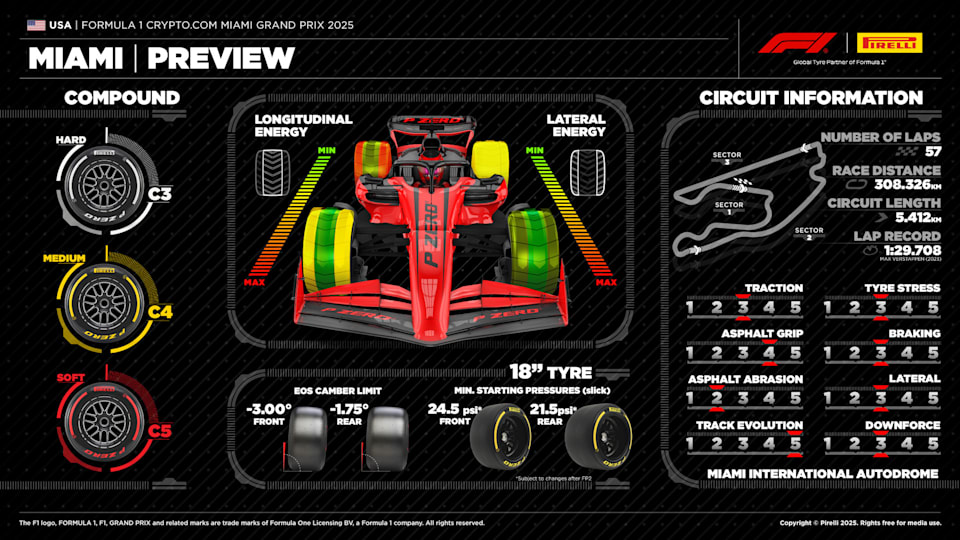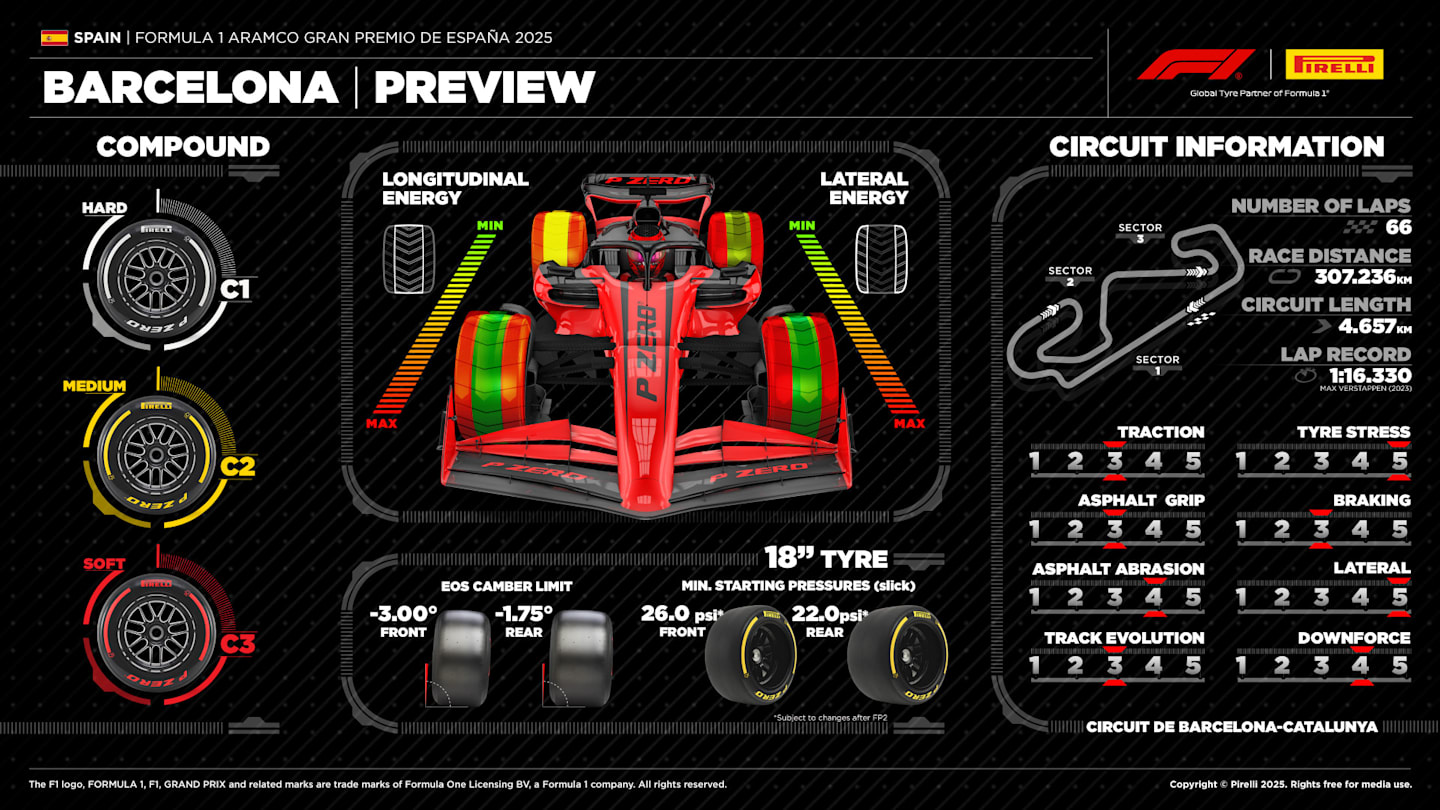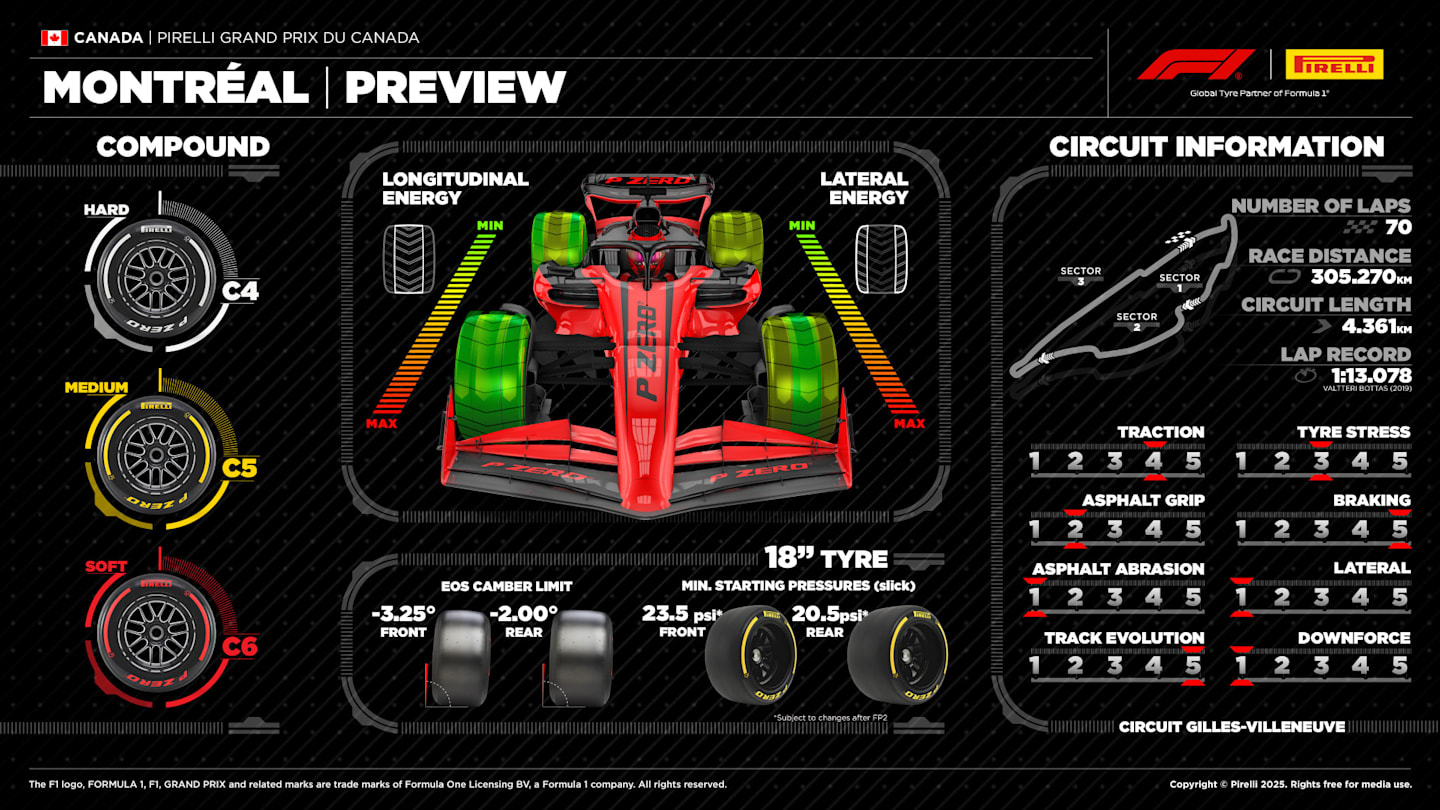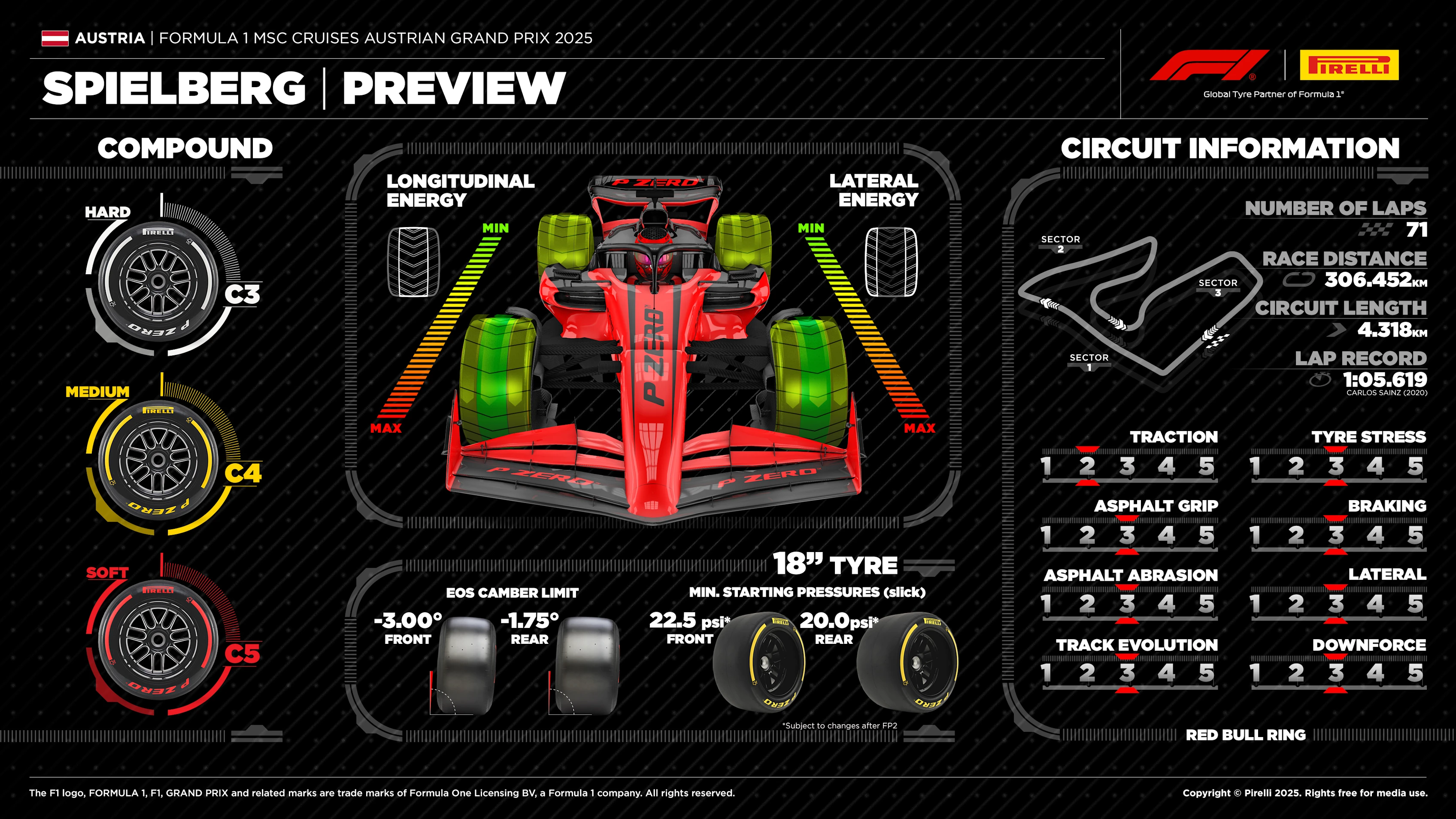At a Glance:
At a Glance: Formula 1 Grand Prix 2025 Season (24 rounds)
WHEN IT’S TIME TO CHANGE FROM SLICK TO WET TYRES IN FORMULA 1 | The Racing Spot - Pirelli
It’s funny to think that an entire Formula 1 car ¬is entrusted to just a few square centimetres of rubber gripping the asphalt. Looking at the whole field of 20 cars, that roughly adds up to around eight square metres and 700 kilograms of advanced technology fighting the laws of physics, courtesy of Pirelli’s tyres. Here’s how it all works, in theory and in practice. Centrifugal force --read more--
The Usual Suspects: The 2025 Tyres
Tires
Here's an excellent video done prior to the 2018 season on tires. For Formula 1 tires are are of the utmost importance, everything from which compound you use to how quickly your pit stop(s), during a race are performed. Formula 1 races are almost always decided on the rubber compounds being used for a particular race and how well a team uses the tire rubber compounds for a specific race and how quickly the pit crew can change tires during a race. As a rule, multiple tire compounds are assigned for a particular race and during that race the team must use both of the assigned tire compounds at some point during the race. Note: Since a Formula 1 race continues even when the track is wet, in addition to the assigned tires for a race, each team also has two different types of tires for wet track conditions, Intermediates and Full Wets, that have treads patterns designed to dissipate the water on the track.
There is none; Formula 1 is the highest form of motor racing on the planet; you’re starting at the top. Tires will become interesting to you, very interesting, very, very interesting, you just don’t know. You are starting your learning process at the same time we all are learning about the Ultrasofts.


